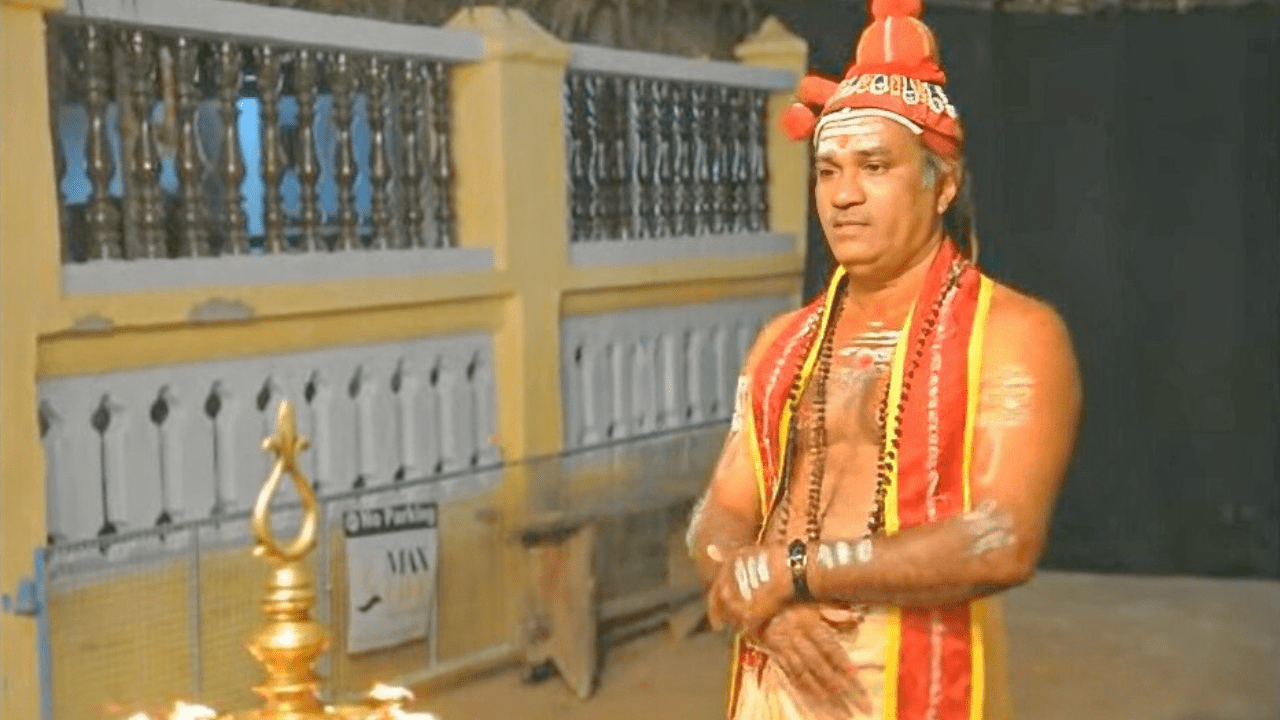Art & Design
Pathakam: The Unique Storytelling Dance Form of Kerala’s Cultural Heritage
Pathakam is a traditional storytelling art form that shares a few features with Koothu but is distinguished in its emphasis on narrative over dance
Pathakam is a traditional storytelling art form that shares a few features with Koothu but is distinguished in its emphasis on narrative over dance

Pathakam is a traditional storytelling art form that shares a few features with Koothu but is distinguished in its emphasis on narrative over dance. Unlike dance, which prizes pliant bodies and graceful movements, Pathakam’s centre of gravity is the story itself. It uses a lively mixture of prose, verse for narration, and song to express its content. Although the movement is minimal, the classical gestures set a visual rhythm to the performance that sustains a balance between simplicity and expressiveness.
The stories of Pathakam embody Champu, a literary form of Malayalam that leans heavily on local idioms and expressions. This cultural connection has made Pathakam very popular with the Malayalam public. Pathakam, “dissertation” in English, truly lives up to its name, as it can be about anything from moral lessons to legend. Its narratives are all based on local culture.
The famous Temples’ Pathakam, as the Chathunnoor Pathakam was called, is sung and acted by the caste who made their livelihood from temple arts. At the same time, it is noteworthy that it is also held outside any religious precinct. Although most Indian bardic arts are tied to religious settings, Pathakam has moved beyond these bounds to reach a wider audience. Moving from its home in past religious precincts as depicted down-temples has transformed into a form of cultural entertainment that allows Pathakam’s descendants to be attuned to people outside.
Pathakam eschews the complex footwork and ornate choreography found in other performance arts; it prefers, instead, the forging of a powerful and expressive narrative. Though modest, every motion is meaningful; every gesture adds depth to text and tune lines until the entire work becomes an unbroken symphony. These gestures, which draw on the classical forms of Kathakali and Bharatanatyam, bring the characters and their emotions to life so that audience members can not just listen but feel as well, see their stories unfold before them.
What distinguishes Pathakam from other types is its adaptability. While conventional forms of dance have fixed combinations and rhythms, Pathakam instead offers a fluid structure. This allows it to take up various themes, ranging from mythology to social issues. Pathakam’s adaptability is the source of its continuing relevance, allowing it to change with changing times and to reach diverse people. It’s also in tune with the present.
A regular show of Pathakam begins with an invocation, setting pace and atmosphere. As the story unfolds, the actor alternates between talking and singing, making for a lively and engaging performance. Prose sections place the tale in its context, while songs add emotional depth to the narrative. Dialectical back-and-forth requires the performer to be a skilled singer and storyteller, further enriching this performance art.
Simplicity sets Pathakam apart. Unlike other classical forms, which depend on elaborate costumes and make-up, Pathakama’s attention is centred on a good story that is well-told in the performer’s movements. This straightforward approach lets the viewer become involved in what unfolds before the eyes; there are no distractions. The range of Pathakam performances attests to this simplicity used to achieve complexity: performance is a personal and overwhelming experience.
Although Pathakam is performed in a minimalist style, it is challenging for the performer. The storyteller must modulate voice, gestures, and expressions to keep the audience from losing interest in his tale. This means a thorough knowledge of the story told and a way to act it out through subtle changes in tone or movement—thus turning Pathakam into an art that both challenges and captivates.
Pathakam has had an enduring impact on Malayalam culture. Using language and idioms native to the region acts as a bridge between generations, ensuring that Malayalam heritage is not forgotten. Pathakam offers a window into Kerala’s narrative traditions, where cultural values are preserved, and the very soul of history in this part of India is given a new breath. With Pathakam, Malayalam idioms and moral tales are handed down to the next generation. It is, therefore, a cultural heirloom and not simply entertainment.
Today, Pathakam continuously intertwines and combines traditional and modern arts. In this way, it reimagines Malayalam stories from history and folklore to carry over into the present for contemporary audiences. Thirty years later, Pathakam is still relevant. No matter where it is performed, in community centres or festival settings, the timeless themes constantly find new life.
Pathakam is a unique form of storytelling that uses the Champu style. There is no dancing, but this distinctive form of narrative performance can reach audiences emotionally and simply. It can live beyond temples and retain cultural value while absorbing new trends. Pathakam’s simple yet profound contents have made it an integral part of Kerala’s culture.


















